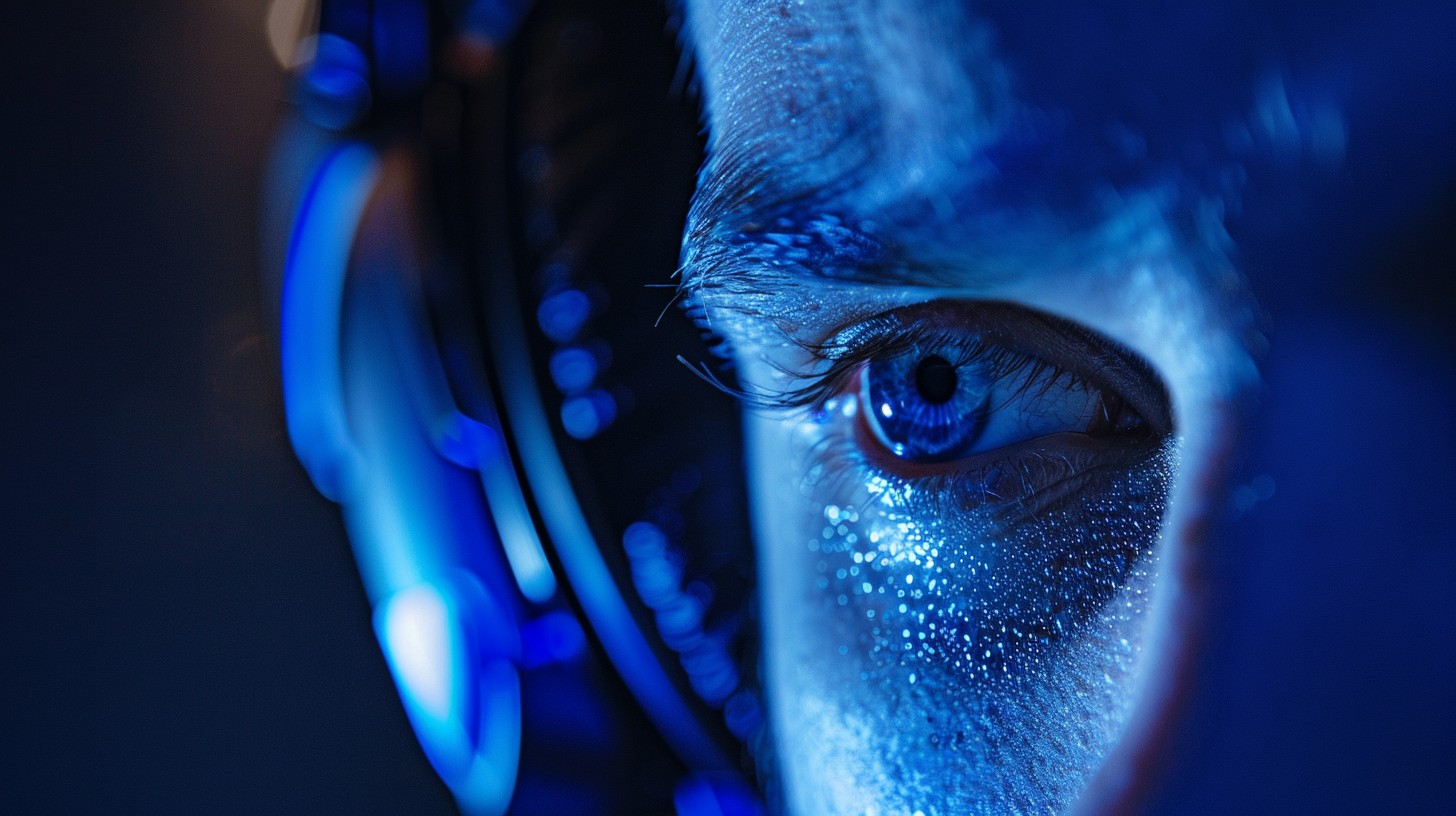Research has shown that extended exposure to blue wavelength light can lead to increased alertness and improved cognitive performance. Additionally, a limited number of studies have indicated that brief exposure to blue light can result in changes in the brain’s functional responses during the exposure period.
How Are People Exposed to Blue Light?
In today’s world, people are constantly exposed to blue light from mobile phones, laptops, and tablets. It has become essential to understand how high doses of blue light exposure may affect human cognition. Recently, a new type of photoreceptor called intrinsically photosensitive retinal ganglion cells (ipRGCs) was discovered. These cells are responsible for non-image-forming functions and are primarily sensitive to blue light in the range of 460 to 480 nm. ipRGCs play a crucial role in non-visual functions such as photo-entrainment of circadian rhythms, pupillary reflex, and alertness.
However, it remains unclear whether blue light can enhance or impair cognitive control, which is our ability to focus on the task at hand. If blue light can facilitate cognitive control, then working in a blue-light-enriched environment could be more effective than other lighting conditions. By examining the effects of blue light on cognitive control, designers and managers can make informed decisions on the lighting environment that optimises work efficiency.
Does Blue Light Cause Brain Fog?
Lack of sleep, poor sleep hygiene, or blue light exposure before bed can all contribute to brain fog. Exposure to blue light before bedtime, such as when scrolling on your mobile phone, can suppress the hormone melatonin, which is essential for deep REM sleep. Waking up in the middle of a sleep cycle can also leave you feeling more tired and unfocused during the day. Excessive screen time can lead to long-term vision problems and other eye health issues.
Computer vision syndrome (CVS), also known as digital eye strain, is associated with activities that place strain on near vision, such as using computers, mobile phones, and other digital devices. Symptoms of CVS include eye strain, aches, redness, dryness, double or blurred vision, and neck and shoulder pain. Using a light-emitting e-reader before bed can lead to a longer time to fall asleep, reduced sleepiness, lower melatonin secretion, and decreased alertness the next morning, all of which can contribute to brain fog.
Does Blue Light Affect Serotonin and Dopamine?
Blue light wavelengths at 460 nm stimulate the production of serotonin and dopamine in the body, which influences mood, appetite, sleep, and social behaviour. However, the body also requires darkness to produce melatonin, a hormone that induces drowsiness and prepares the body for sleep. Exposure to blue light at night inhibits melatonin production and may reduce the activity of anti-cancer cells.
What Does Blue Light Do for Mental Health?
Excessive exposure to blue light can negatively impact mental health, as the increased energy from blue light may cause stress, anxiety, irritability, difficulty concentrating, and mood swings. Studies have also suggested that prolonged screen time may increase the risk of developing depression or anxiety-related disorders. Therefore, it is essential to be aware of how blue light affects mental well-being.
The Link Between Light and Mood
Several studies have highlighted a link between light exposure and emotional well-being. Overexposure to blue light can disrupt the circadian rhythm, which is closely related to emotional states. This disruption can lead to feelings of depression, irritability, and fatigue. Furthermore, prolonged exposure to blue light can cause eye strain and headaches, contributing to stress and anxiety.
Moreover, blue light exposure has been found to damage the retina, potentially leading to vision issues. Additionally, blue light suppresses melatonin production, the hormone that regulates our sleep cycle. As a result, excessive blue light exposure at night can make it difficult to fall asleep and stay asleep, leading to low energy levels the following day, which may increase stress and anxiety.
Blue Light Exposure and the Need for Depression Treatment
Excessive blue light exposure can have adverse effects on mental health, potentially resulting in conditions such as anxiety, depression, and sleep disorders. However, there are several ways to reduce blue light exposure to maintain good mental health. If you are concerned about the potential side effects of blue light exposure, it is important to know that treatments are available for depression.
What Are the Consequences of Excessive Blue Light Exposure?
Blue light exposure from electronic devices can lead to eye diseases such as retinal damage and macular degeneration, as well as computer vision syndrome. Experts have differing opinions on the effectiveness of blue light-blocking glasses; while some people experience relief from eye strain, there is a lack of robust scientific evidence to fully support their use. Excessive blue light exposure can also disrupt the body’s biological clock, resulting in poor sleep quality.










